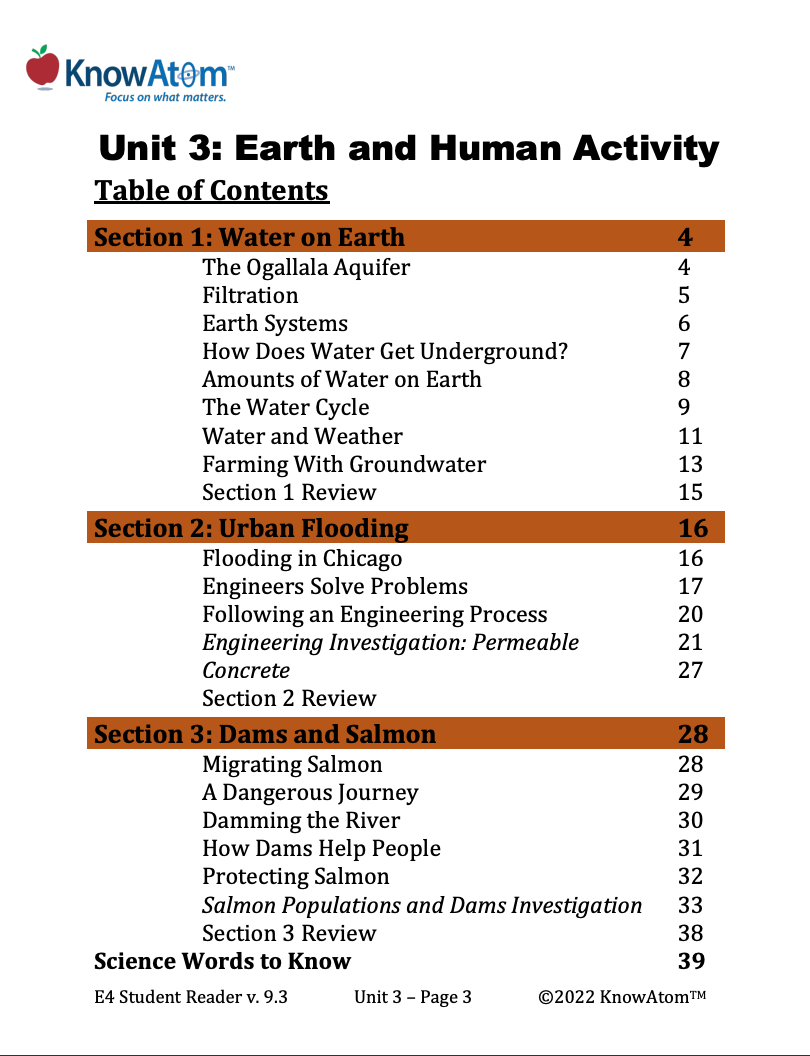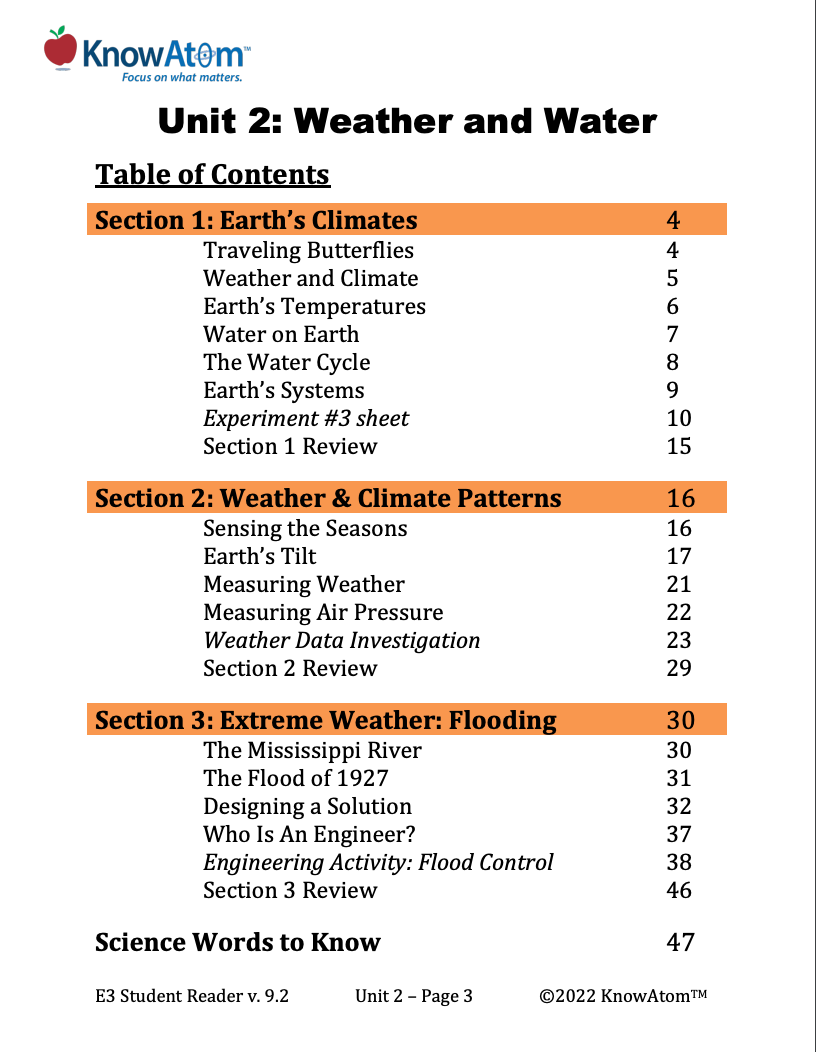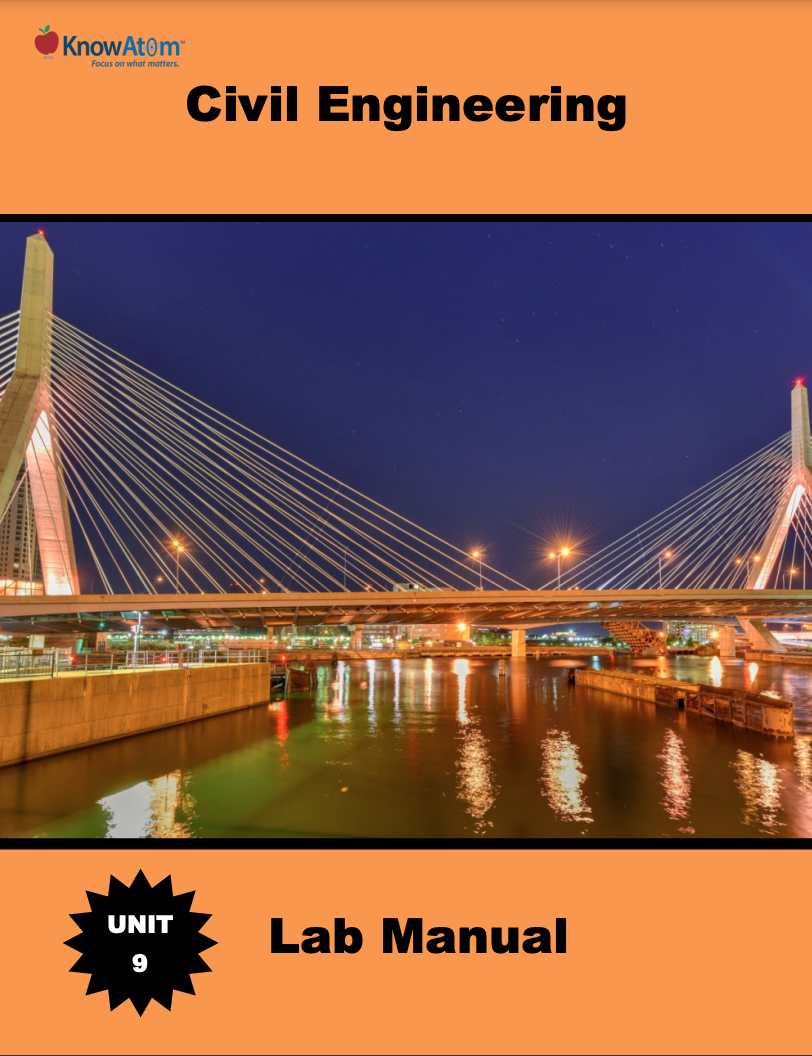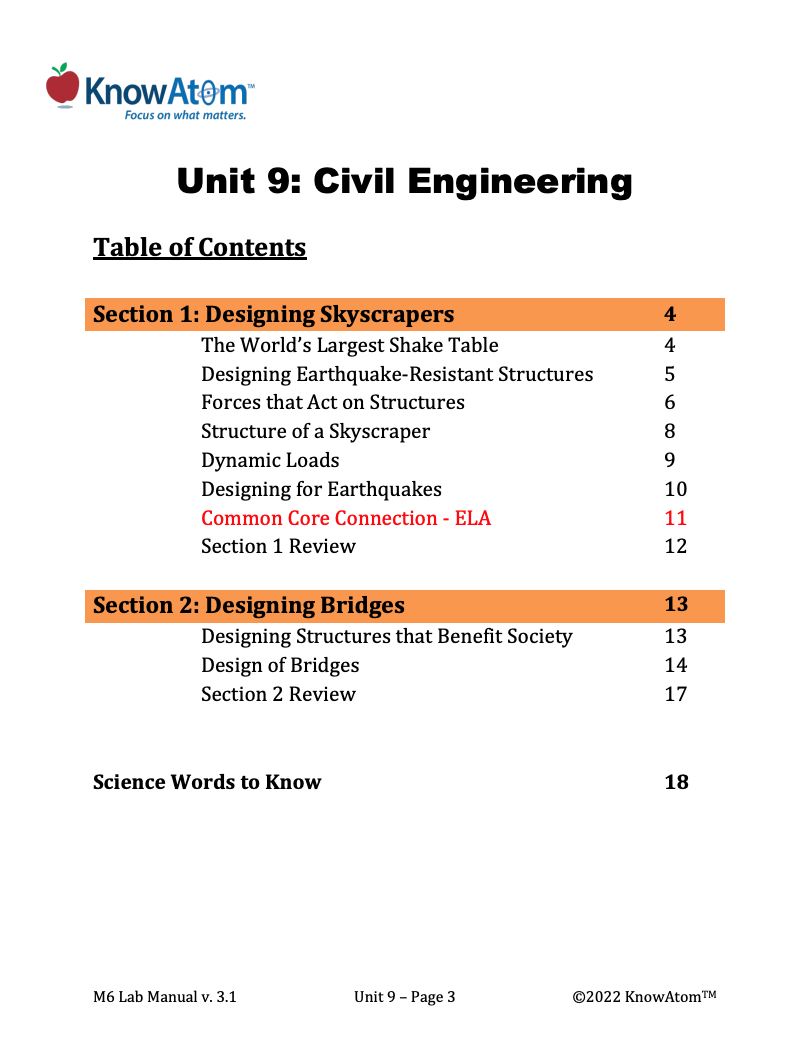Evaluate a design solution that reduces the impact of a weather-related hazard. Earth's System 15. Analyze and interpret data to determine effects of weathering and rate of erosion by water, ice, wind, and vegetation using one single form of weathering or erosion at a time.

In this unit, students explore the science phenomena of Earth systems by studying aquifers, comparing the ability of different Earth materials to hold water. In this lesson, they build on that knowledge to engineer permeable pavement that can solve the problems of urban flooding and water pollution. This page showcases key components of this lesson.

In this unit, students discover how the sun provides light and heat to Earth and how the water cycle influences weather and climate. Students analyze weather patterns in specific regions during a particular season. They then use that knowledge to study the effects of extreme weather on humans, evaluating solutions to protect against those effects.
.png)
In this unit, students focus on interactions between the hydrosphere and the geosphere as they explore the phenomena of groundwater in human development. For this lesson, they engineer a water filtration device to treat samples of simulated polluted stormwater runoff. This page highlights key components of this lesson.

In this unit, students explore forest ecosystems, studying the science phenomena of interactions between living things and the environment. In this lesson, students build on their understanding of how energy affects the growth of organisms by exploring the phenomena of forest food webs, and analyzing how the phenomena of drought can have a ripple effect through the ecosystem. This page showcases all components of this lesson.

In this unit, students explore how engineers and architects design structures that help human populations survive and thrive in their environment. Students take on the challenges of civil engineers as they design different types of bridges to discover a design that can carry the maximum load. This page highlights the components of this lesson.
Standards citation: NGSS Lead States. 2013. Next Generation Science Standards: For States, By States. Washington, DC: The National Academies Press. Neither WestEd nor the lead states and partners that developed the Next Generation Science Standards were involved in the production of this product, and do not endorse it.
